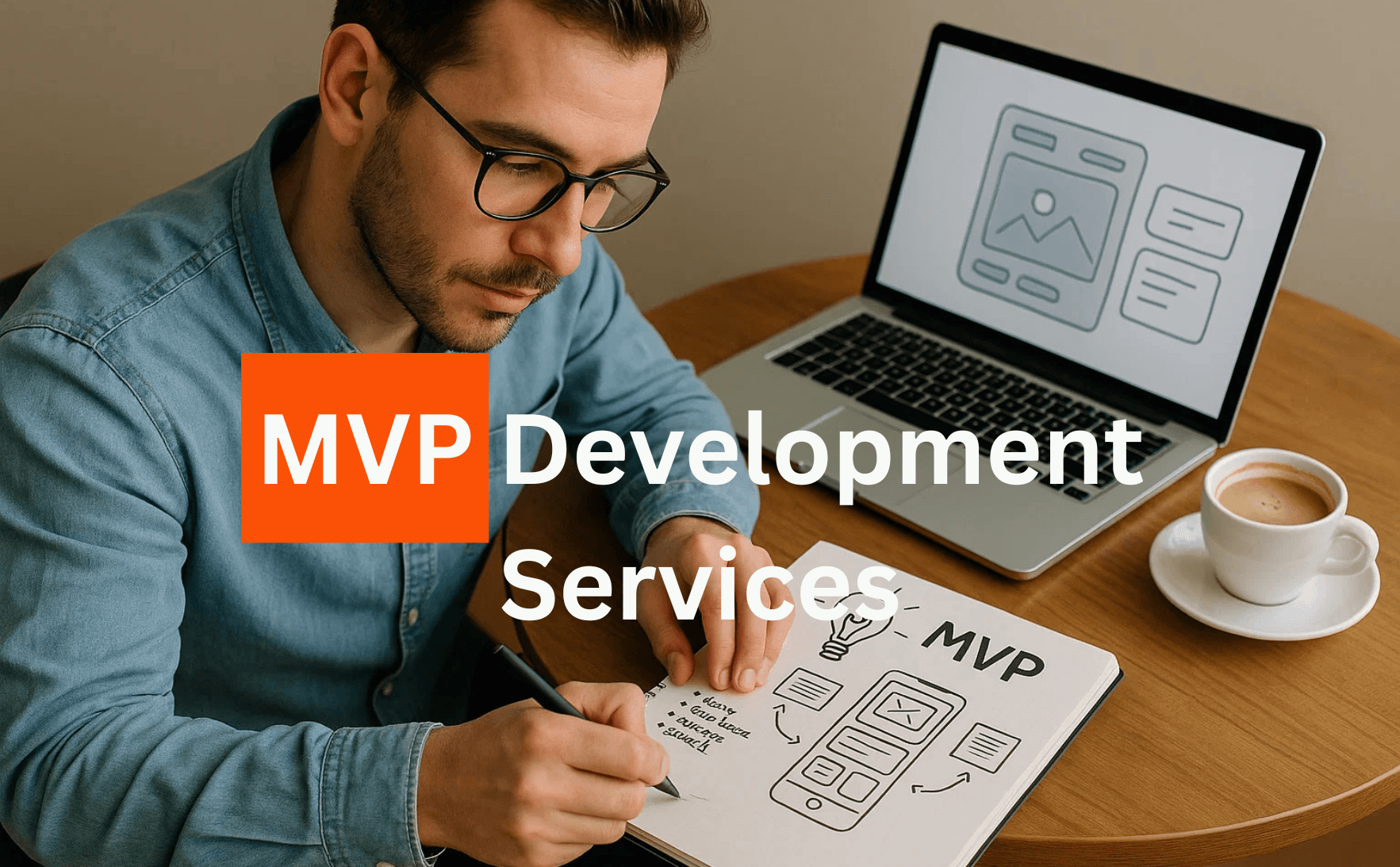MVP Development Service: How Small Businesses & Startups Can Launch a Successful MVP
Picture this: you have a brilliant business idea that could be a game-changer in your market. You’ve sketched out features on a notepad and even daydreamed about a slick app interface over your morning coffee. Exciting, right? But here's the big question: do you pour months of time and a mountain of money into building the full product right away, hoping customers will love it? Or is there a smarter way to test the waters first without risking everything?
Imagine launching a product only to be met with crickets—no users, no interest. Heartbreaking, right? Now, what if you could test your concept with minimal cost and effort to see if it truly resonates with customers before going all-in? Here's the kicker... you can. It’s called building a Minimum Viable Product (MVP), and using an MVP development service can make this journey a whole lot easier and more effective.
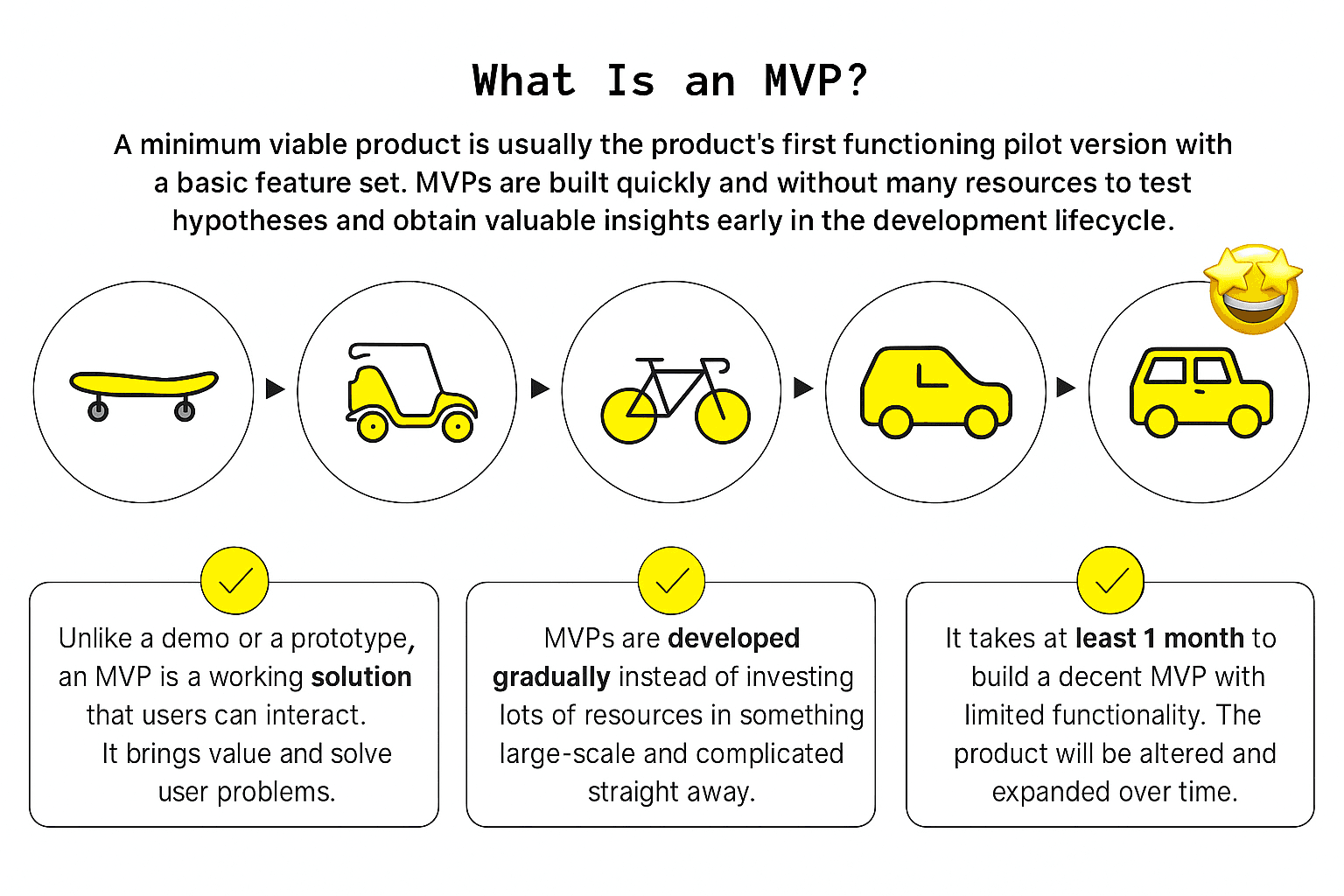
In this guide, we'll explore what an MVP really is for a small business or startup, why starting with an MVP is a smart move, and how an MVP development service works. We’ll also discuss how to choose the right partner to build your MVP, share a personal story (lesson learned!), answer some common FAQs, and more. If you’re a small business owner, startup founder, or tech entrepreneur wondering how to launch smart and lean, stick around. But wait... this isn’t just another dry tech tutorial—it’s a friendly conversation about turning your vision into reality, the savvy way.
What is a Minimum Viable Product (MVP)?
Let’s start with the basics. MVP stands for Minimum Viable Product. In plain English, that means the simplest working version of your product that still delivers the core value to your customers. Think of it as the bare essentials needed to solve your target users’ primary problem—nothing more. An MVP has just enough features to be usable by early customers, so you can get feedback and validate your idea.
For example, imagine a new food delivery app. Instead of building every possible feature, your MVP might simply let users order from a few local restaurants and pay online. No AI recommendations, no in-app chat – just the core service to see if people bite. By releasing this bare-bones version, you can observe real user behavior: Do people find it useful? Which features do they ask for next? Where do they get confused? Armed with those insights, you can iteratively improve your app in the right direction.
What is an MVP Development Service?
Now, you might be wondering, “This MVP idea sounds great, but how do I actually build one—especially if I’m not technical?” Here’s where an MVP development service comes into play. It’s basically a specialized team that helps you build a Minimum Viable Product. They guide you through picking the essential features and then design & develop that simple first version of your idea, fast. In short, an MVP development service turns your vision into a workable product you can test with real users.
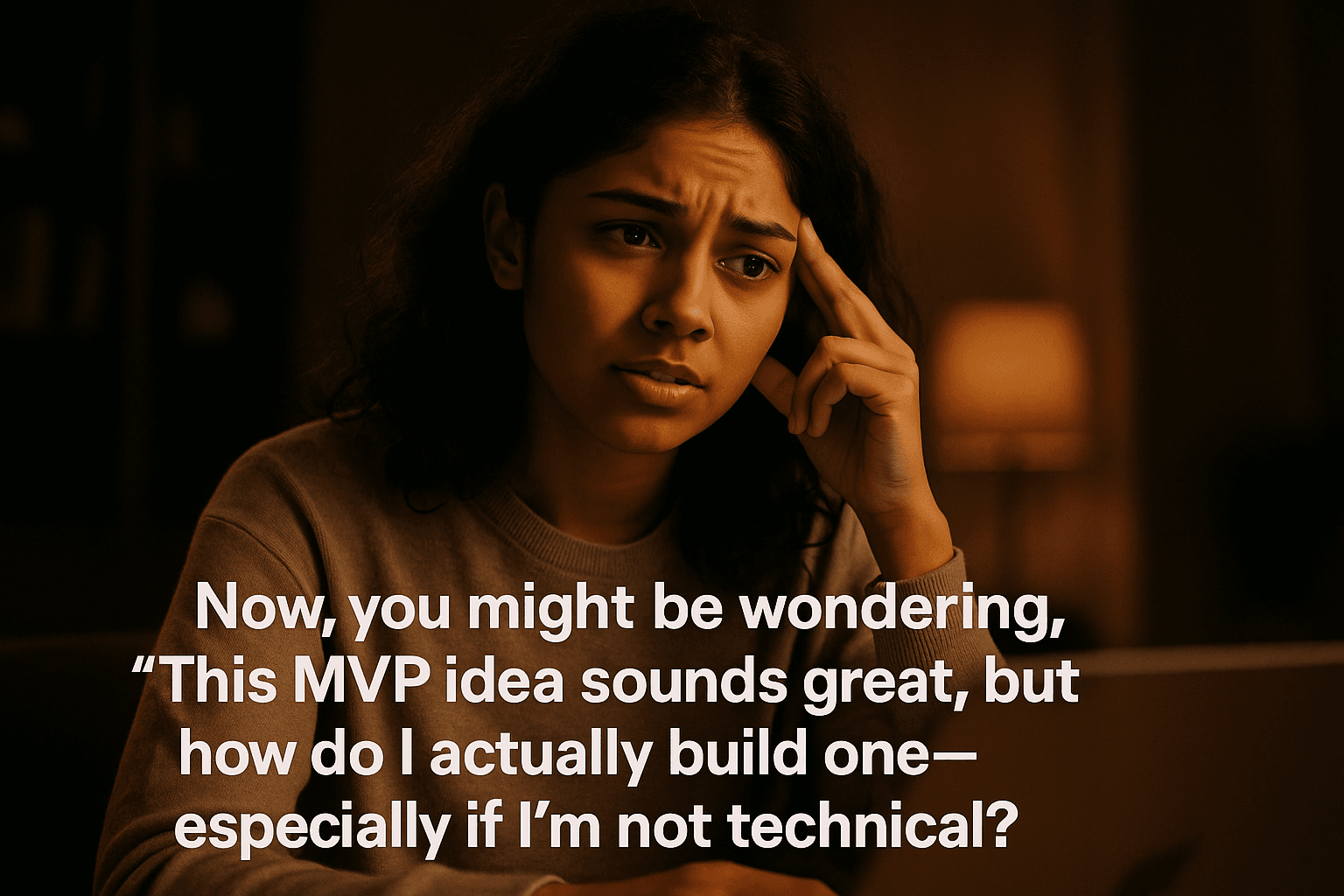
Instead of attempting to cobble together a prototype on your own or hiring a full in-house tech team (which can be expensive and time-consuming), you partner with a provider who specializes in MVPs. Such a team has experience with early-stage products and knows how to keep things lean and user-focused. They cover all aspects of getting your MVP off the ground – from refining your idea and identifying the must-have features, to designing a basic prototype, building the core product, testing it, and finally launching the MVP to real users. In short, this service guides you from the spark of an idea to a tangible, working product in customers’ hands, fast.
Why Build an MVP First? (The Benefits of Starting Small)
You might be thinking, "Why not just build the whole product? Why bother with an MVP at all?" It’s a fair question. Many passionate entrepreneurs have a grand vision and worry that an MVP might undersell it. However, starting with an MVP offers huge advantages, especially if you’re on a tight budget or timeline. Here are some key benefits of building an MVP before a full product:
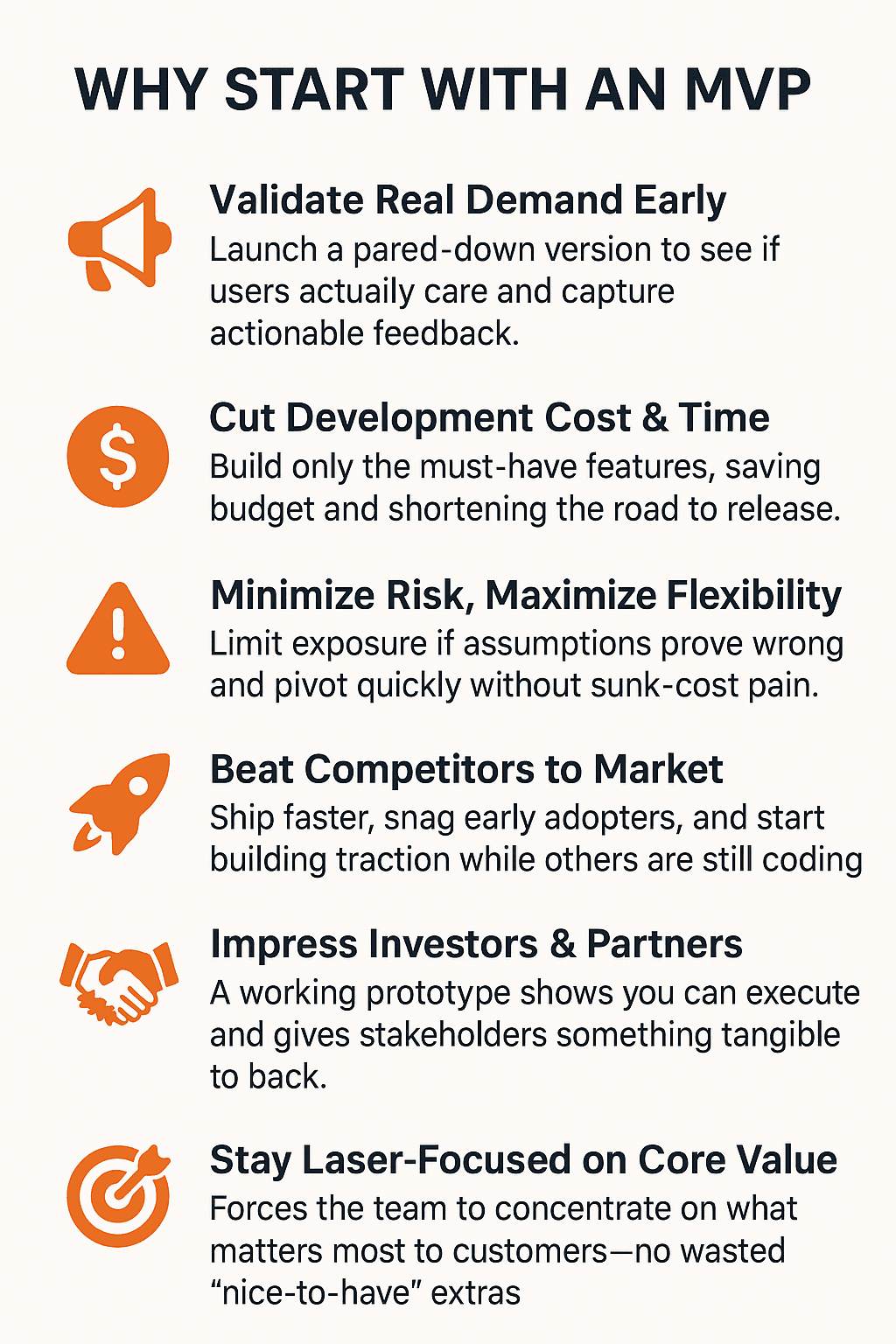
- Validate the Market & Get Feedback Early: An MVP lets you test the waters with real users before going all-in. You release a basic version to gauge interest and collect feedback right away. If customers love it (or hate it), you’ll know and can adjust accordingly – long before you’ve invested in a full product.
- Save Time, Money & Reduce Risk: By focusing only on core features, an MVP takes less time and budget to develop. You’re not pouring resources into bells and whistles no one uses. This lean approach means if things don’t go as planned, the setback is smaller and you can pivot quickly. In short, you minimize wasted effort and avoid major financial risks.
- Launch Sooner & Impress Stakeholders: An MVP gets you to market faster – potentially beating competitors to the punch. Being out there early helps you start building a customer base. Plus, having a working product (even a small one) can wow potential investors or partners. It proves you can execute and gives them something tangible to see, increasing your credibility.
Here’s a reality check: many startups fail because they build something nobody really needs. An MVP is like an insurance policy against that. It forces you to focus on what matters most to customers right from the start.
The MVP Development Process (Step-by-Step)
So, you’ve decided to build an MVP (smart choice!). What does the process look like? Every project is unique, but generally developing an MVP involves a few key stages. If you’re working with an MVP development service, the process might go something like this:
- Idea & Market Research: First, clarify your idea and understand your target market. What problem are you solving, and for whom? This stage often involves discussions or a workshop with your development team to nail down the product vision and list your assumptions. You’ll identify your target users and study what solutions (if any) they currently use. Basically, you’re defining the problem and making sure it’s real.
- Define Core Features: Next, determine the must-have features for your MVP. This step is all about prioritization. Out of all the functionality you eventually want, which 2–5 features are absolutely critical to solving the main problem? You and your team narrow it down ruthlessly. (If a feature doesn’t serve the core goal, it can wait.) Sometimes the team will also create simple wireframes or a prototype at this stage to visualize the product flow, but the key is deciding what your MVP will and won’t include.
- MVP Development: Now the actual building begins. The developers start coding the MVP based on the defined core features. Since this is a small-scale product, development is usually relatively quick – think weeks or a couple of months, not years. The mantra here is “done is better than perfect.” The MVP doesn’t need to be beautifully polished or infinitely scalable; it just needs to work well enough for early users to test. Throughout this stage, you’ll likely see demos and give feedback as the product takes shape.
- Testing & Launch: Even a simple product needs testing. The team will test the MVP thoroughly to iron out major bugs and ensure each core feature works as intended. Then you’re ready to launch. Often the MVP is rolled out to a small user group or limited market first, rather than a massive audience. That way, you start getting real feedback while keeping things manageable. It’s an exciting moment – your idea is out in the wild!
- Gather Feedback & Iterate: Once users start using the MVP, listen and observe. Pay attention to what users do (through analytics) and what they say (through feedback or support inquiries). Are they using the product as expected? Which features do they love? What are they asking for next? This is when you gather invaluable insights. Using this data, you can decide on next steps: maybe double down on what works, improve or remove what doesn’t, or rethink the idea (perhaps pivoting to a different approach). The beauty of an MVP is that you’re learning with relatively low stakes. With real-world feedback in hand, you and your team can plan how to evolve the product – whether that means adding features, adjusting your strategy, or even, in rare cases, going back to the drawing board.
Throughout this process, communication with your development team is key. A good MVP development service will keep you in the loop with regular updates. It’s a collaborative effort: you bring the vision and business insight, they bring the technical expertise.
Choosing the Right MVP Development Service Provider
Finding the right partner is crucial. Look for a team with specific experience building MVPs (ask for examples of past startup projects). They should have a strong mix of skills (design, development, etc.) and communicate transparently about timelines and costs. Industry knowledge can be a bonus if your idea is niche. Also, consider their willingness to support you after the MVP launch – will they help with iterations or hand off the project? Finally, make sure their approach and budget align with your needs. The goal is to find a trustworthy partner who "gets" your vision and can execute it in a lean, efficient way.
A Personal Anecdote: MVP Lessons from the Trenches
Let me share a quick story from my own experience. A couple of years ago, I had an idea for a service that connects local musicians with event organizers. I was passionate and, um, maybe a bit overeager. Initially, I wanted the works – a fancy website with musician profiles, booking calendars, online payments, reviews, you name it. But as a first-time founder on a shoestring budget, that wasn’t realistic. Instead, I took the MVP approach.
I partnered with an MVP development service to boil the idea down to its core. We decided the must-have was simply this: a musician can list their act, and an event organizer can book them. That’s it. We cut everything else for version one. In about eight weeks, we had a bare-bones site up and running. It wasn’t pretty, but it worked.
And guess what? Within days of launching, the first booking came in! Early users started giving feedback right away – they wanted to search by music genre, some bands wished to upload demo tracks, and one event planner asked for a way to hold deposits. If I had built the full product from the start, I might have spent months on features that nobody really needed. By starting with an MVP, I learned exactly what users cared about.
Over the next few months, we gradually added the most requested features. We even tweaked our focus (a slight pivot toward corporate events, since those users showed the most interest). In the end, that scrappy little MVP grew into a successful platform. And it all began by starting small and listening to users. Now, whenever I meet fellow entrepreneurs unsure of how to proceed, I can’t help but say: “Think MVP!”
Some Powerful Tools for Rapid MVP Development
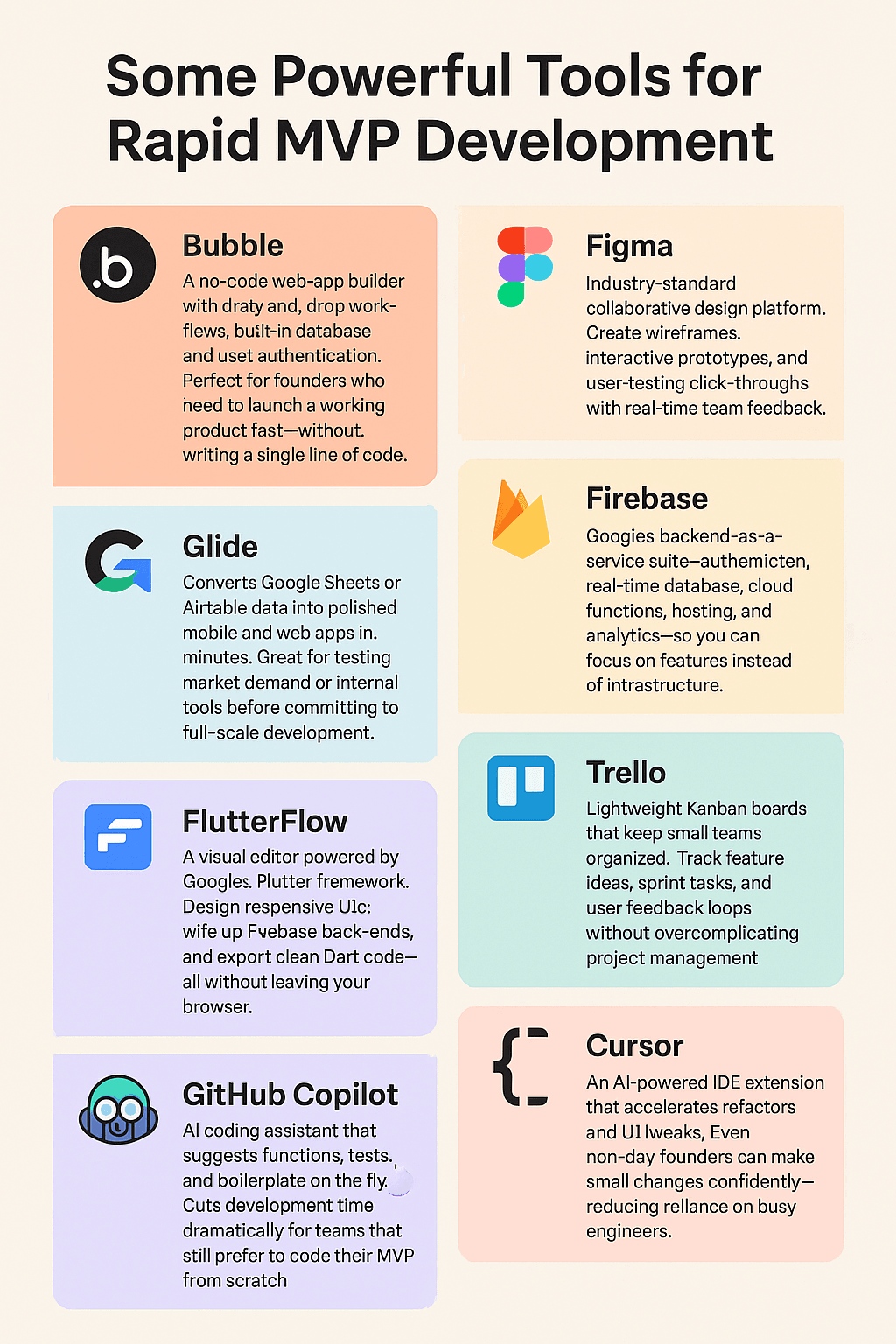
- Bubble
A no-code web-app builder with drag-and-drop workflows, built-in database, and user authentication. Perfect for founders who need to launch a working product fast—without writing a single line of code.
- Glide
Converts Google Sheets or Airtable data into polished mobile and web apps in minutes. Great for testing market demand or internal tools before committing to full-scale development.
- FlutterFlow
A visual editor powered by Google’s Flutter framework. Design responsive UIs, wire up Firebase back-ends, and export clean Dart code—all without leaving your browser.
- Figma
Industry-standard collaborative design platform. Create wireframes, interactive prototypes, and user-testing click-throughs with real-time team feedback.
- Firebase
Google’s backend-as-a-service suite—authentication, real-time database, cloud functions, hosting, and analytics—so you can focus on features instead of infrastructure.
- Trello
Lightweight Kanban boards that keep small teams organized. Track feature ideas, sprint tasks, and user feedback loops without overcomplicating project management.
- GitHub Copilot
AI coding assistant that suggests functions, tests, and boilerplate on the fly. Cuts development time dramatically for teams that still prefer to code their MVP from scratch.
- Cursor
An AI-powered IDE extension that accelerates refactors and UI tweaks. Even non-dev founders can make small changes confidently—reducing reliance on busy engineers.
- Replit + GPT-4
Browser-based coding environment where you can prompt GPT-4 for quick scripts, APIs, or UI components and deploy with one click—ideal for rapid experimentation and instant feedback.
Use any combination of these tools to validate your idea quickly, learn from real users, and iterate toward product-market fit without burning through budget or time.
Leveraging Generative AI at Every Stage of MVP Development
Generative AI (GenAI) isn’t just a buzzword—it’s a turbo-charger for lean product teams. Below is a practical, stage-by-stage playbook showing exactly how founders, small-business owners, and tech entrepreneurs can harness GenAI to build a sharper MVP in less time and with less cash.
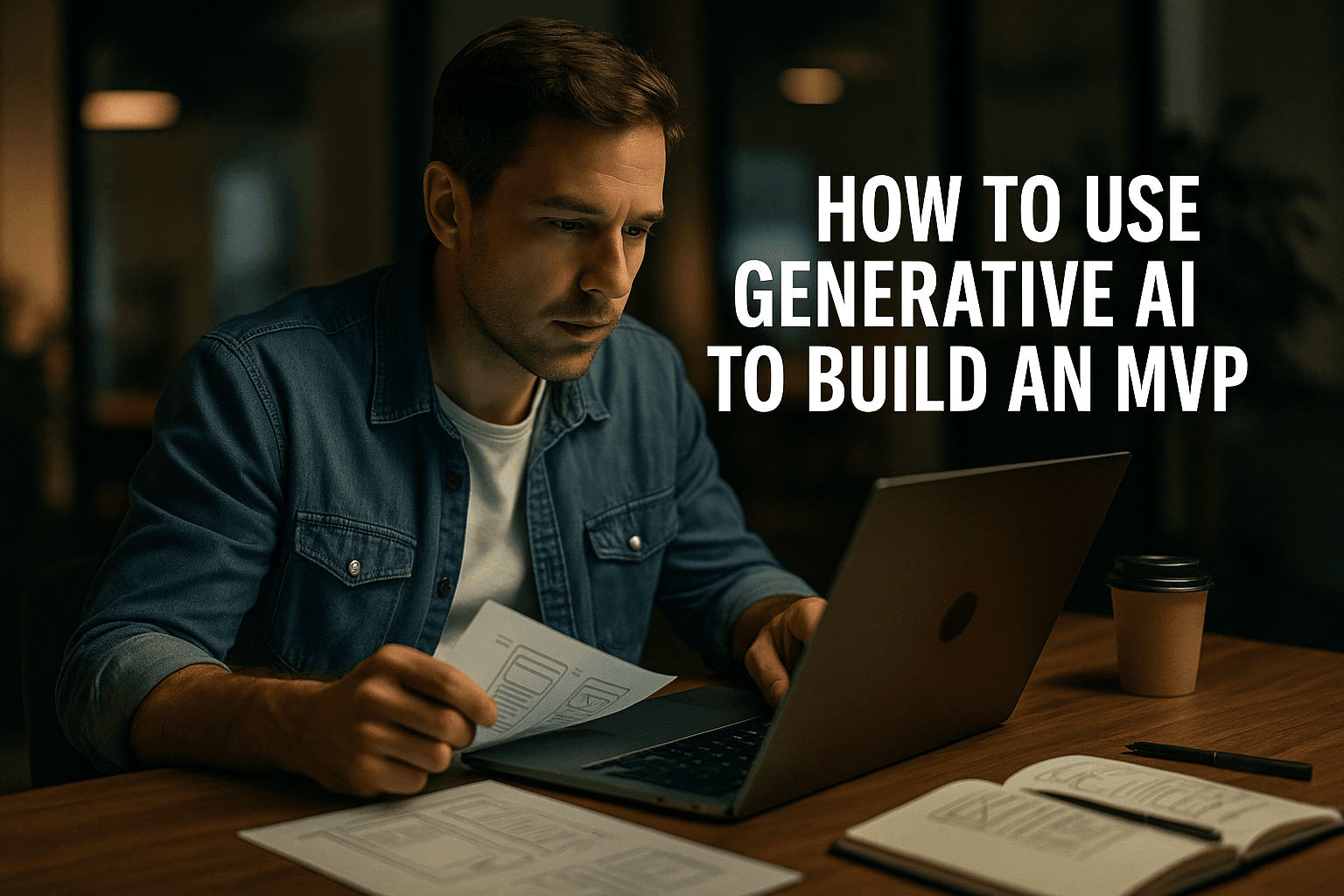
1. Idea Validation & Market Discovery
How GenAI Helps
- Rapid research summaries – Feed a set of competitor URLs, product reviews, or Reddit threads into a large-language model (LLM). In seconds you’ll get distilled pain points, common feature requests, and pricing benchmarks.
- Instant persona drafts – Ask the model to generate user archetypes (demographics, goals, frustrations), then refine them through quick follow-up prompts.
- Demand-side testing – Use AI to create multiple ad or landing-page variants and run micro-ads. The best-performing message signals which value prop resonates before you write a single line of code.
Tip: Keep prompt history organized in a shared doc so anyone on the team can reuse or tweak it later.
2. Feature Prioritization & User Stories
How GenAI Helps
- MoSCoW lists on demand – Paste your backlog and prompt, “Classify each feature as Must-have, Should-have, Could-have, or Won’t-have for v1.”
- User-story generation – For each must-have feature, ask the model to output crisp “As a , I want so that ” stories plus acceptance criteria.
- Effort sizing – LLMs trained on software repositories can offer ball-park estimates (story points, hours, or T-shirt sizes) that engineers can sanity-check.
3. UX/UI & Prototype Design
How GenAI Helps
- Figma auto-layouts – Tools like Figma’s AI or Galileo.ai translate plain-English prompts into starter wireframes and UI components.
- Image generation – Use DALL·E or Midjourney to create hero banners, onboarding illustrations, or logo concepts for A/B testing.
- Conversation flows – For chatbot MVPs, ask ChatGPT to draft dialogue paths and fallback messages that feel natural.
Tip: Treat AI-generated visuals as first drafts. Hand them to a designer (or refine yourself) to ensure accessibility and brand consistency.
4. Code & Architecture
How GenAI Helps
- Boilerplate scaffolding – GitHub Copilot, Replit AI, or Codeium can spin up React components, RESTful endpoints, and CRUD operations in minutes.
- Database schema suggestions – Prompt an LLM with “Design a minimal Postgres schema for an appointment-booking app” and tweak from there.
- Edge-case unit tests – Ask for test cases you forgot. AI often surfaces error conditions junior devs miss.
Guardrails:
- Run static analysis and code reviews—AI occasionally outputs insecure or inefficient patterns.
- Store secrets and API keys outside prompts to avoid leakage.
5. Content & Microcopy
How GenAI Helps
- Onboarding tooltips and empty-state messages tailored to your personas.
- Transactional email templates—password resets, order confirmations, feedback requests.
- In-app FAQs generated from early support tickets.
6. Analytics & Feedback Loops
How GenAI Helps
- Auto-tagging user feedback – Pipe survey responses or support chats into an LLM to classify sentiment, feature requests, or bug reports.
- Cohort insights – Ask, “Summarize behavioral differences between users who completed onboarding and those who churned after day one.”
7. Marketing & Launch
How GenAI Helps
- SEO-friendly landing pages – Generate headline options, meta descriptions, and structured FAQs around your primary keyword.
- Press-release drafts – Provide bullet points; get a polished announcement ready for review.
- Founders’ pitch deck – Supply your problem/solution outline; receive a slide-by-slide storyboard with speaking notes.
8. Post-Launch Iteration
How GenAI Helps
- Product-roadmap ideation – Feed usage metrics and feedback summaries back into the model: “Propose the next three high-impact features ranked by ROI.”
- Scenario simulation – Ask “What happens to server load if daily active users triple?” to identify scaling chokepoints early.
Best Practices for Safe & Effective GenAI Use
- Human-in-the-loop – Treat AI output as drafts, not gospel. Final decisions stay with humans.
- Prompt libraries – Save successful prompts in version control; adjust as the product evolves.
- Data privacy – Exclude sensitive customer data from prompts or opt for on-prem/private LLM deployments.
- Model governance – Document which AI tools were used where, so future auditors (or acquirers) understand your stack.
Frequently Asked Questions (FAQs)
Q: What exactly is an MVP development service?
A: It’s essentially a specialized team that helps you build a Minimum Viable Product for your idea. They’ll guide you through choosing the essential features and then design and develop that simple first version. In other words, an MVP development service takes your concept and quickly turns it into a functional product you can test with real users.
Q: How much does it cost to build an MVP?
A: It depends on the project’s complexity and who develops it. An MVP could cost as little as a few thousand dollars for a very simple version, or tens of thousands for a more complex app. The good news is it’s still much cheaper than building a full product with every feature. Always discuss your budget with your development team – they can often adjust the MVP’s scope to fit what you can afford.
Q: Can I build my MVP myself instead of hiring a service?
A: If you have the technical skills (and time), you can try to create a basic MVP on your own — some founders do use coding or no-code tools to get started. But not everyone is comfortable building software from scratch. That’s where an MVP development service really helps. They bring the technical expertise and guidance, allowing you to focus on your overall vision. In short, you could DIY your MVP, but partnering with experts will likely get you there faster and with fewer headaches.
Conclusion: Start Small, Learn Fast, Succeed Sooner
Launching a new product or startup is daunting, no doubt. But the MVP approach is like finding a clever trail up the mountain, getting you to that first milestone without risking everything. By using an MVP development service to build that first version, you’re effectively reducing risk and upping your chances of success. You’re making a calculated, smart move instead of a wild leap.
Don’t let a big vision stop you from starting with a small step. Every big success starts somewhere—your job is to get that somewhere as soon as possible and learn from it. Whether you end up refining your product into something customers adore, pivoting to a new approach, or even deciding to shelve an idea that just didn’t pan out – you’ll be doing it with eyes wide open, backed by real-world insights.
If you have a dream product in mind, consider this your friendly nudge: build that MVP, get it out there, and see what happens. And if you need help, there are skilled MVP development service teams ready to roll up their sleeves alongside you. Don’t let fear of the unknown or the pull of perfectionism slow you down. Start small, stay smart, and you might just surprise yourself with how far you can go.
Let's Build Digital Excellence Together
Read more Guides
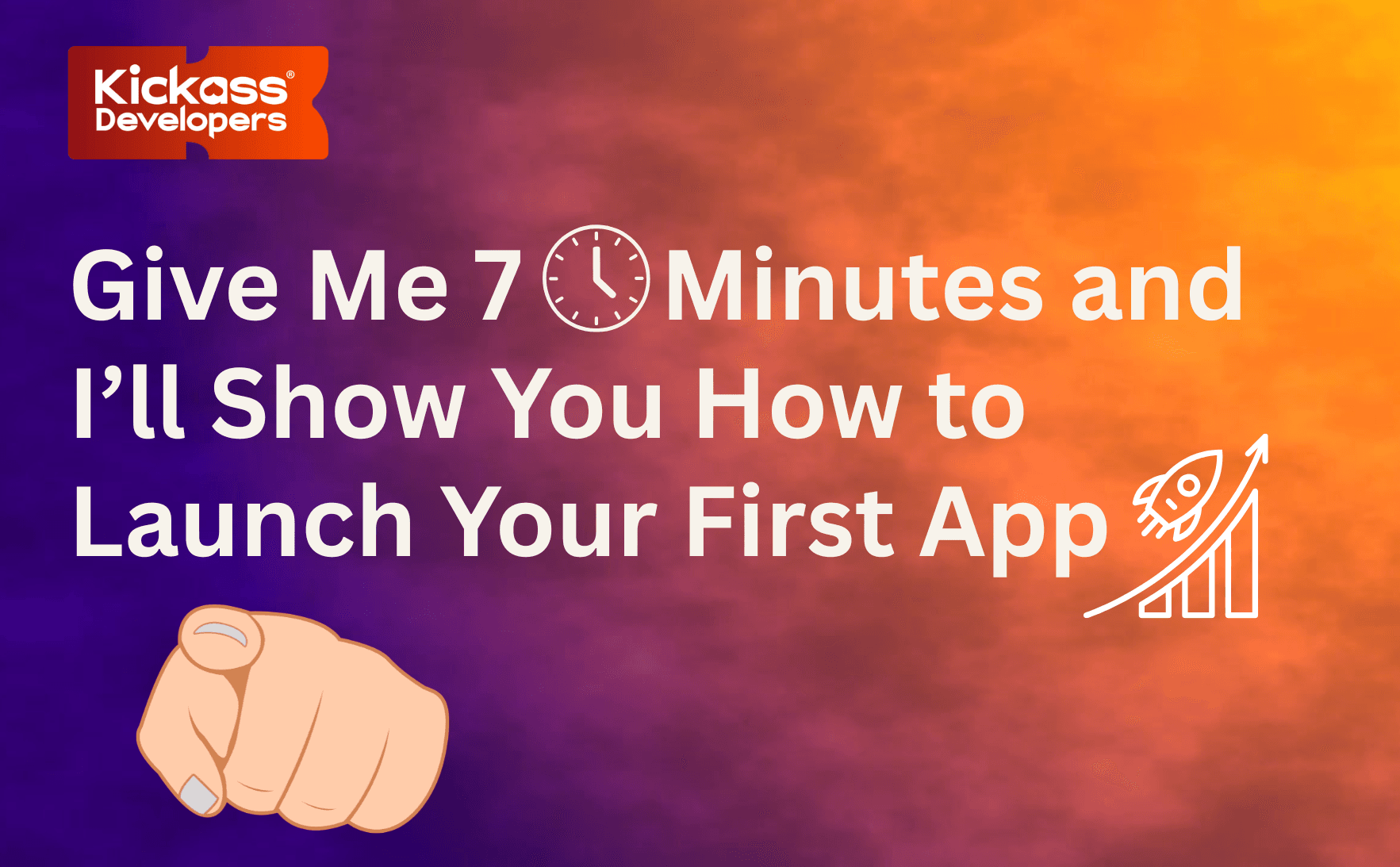
Give Me 7 Minutes and I’ll Show You How to Launch Your First App
Ever have an app idea that hits you mid-coffee sip? One that feels too good to ignore—but then your brain whispers, “You don’t know the first thing about launching an app.

Tutor CoPilot: How Stanford’s Human-AI Duo Is Changing Live Tutoring
Stanford’s Tutor CoPilot doesn’t promise a sci-fi classroom free of teachers. Instead, it shows a pragmatic, affordable path to inject world-class pedagogy into every tutoring session

Delivery in 15 Minutes? How a Food Delivery App Development Company Builds Lightning-Fast Platforms
Ultra-fast food delivery apps demand microservices, in-memory caching, real-time location intelligence, AI-driven inventory forecasting, and edge-optimized dispatch. A capable food delivery app development company orchestrates Docker, Kubernetes, Redis, OR-Tools, Kafka, React Native, and robust observability to slash order-to-door time to 15 minutes while ensuring compliance, secure payments.


